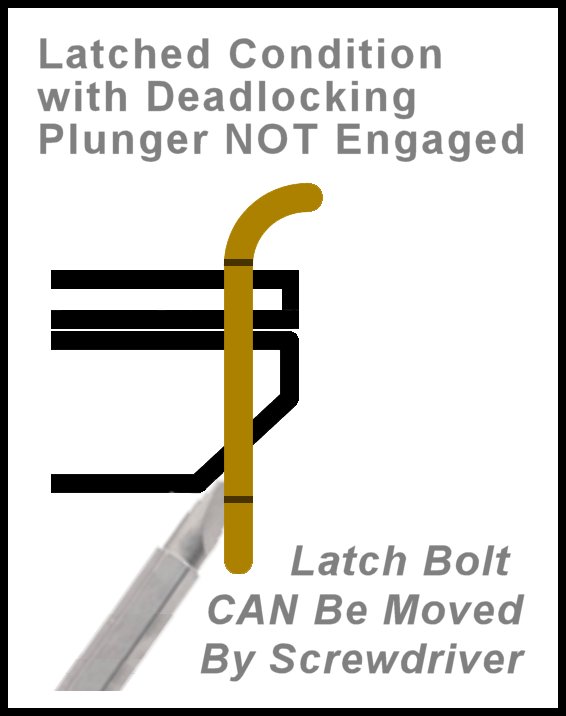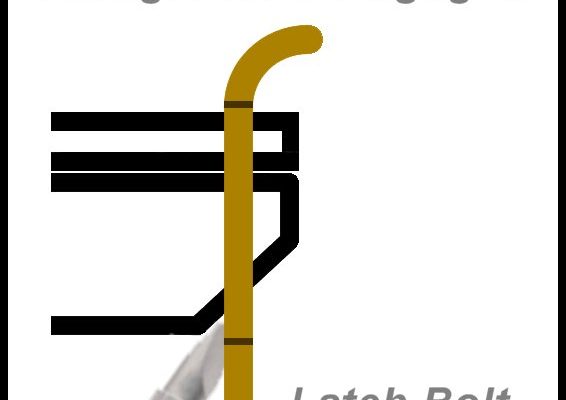
Let’s talk specifically about remote-controlled locks, like the ones made by Schlage or Kwikset. These locks feature a deadlocking plunger that adds an extra layer of security. If this mechanism isn’t working correctly, it can keep you locked out or, worse, make your home less secure. So, how do you diagnose issues with this little but mighty component? Let’s dive in.
Understanding the Deadlocking Plunger’s Role
First, let’s break down what a deadlocking plunger actually does. This small piece of hardware is designed to prevent the latch from being manipulated when it’s locked. Picture it as a mini security guard. When you lock your door, the plunger moves into place, ensuring that a simple push or pull won’t unlock it.
If the plunger is in good shape, the latch will work smoothly, and you won’t have any problems. However, if it’s malfunctioning, you might notice the door has trouble locking or unlocking. This can lead to a lot of unnecessary frustration, especially when you’re in a hurry.
Diagnosing issues with a deadlocking plunger is important not just for convenience but for security, too. If it’s jammed or broken, it can leave your belongings vulnerable to theft.
Common Symptoms of a Malfunctioning Plunger
So, how do you know if your deadlocking plunger is acting up? There are a few common symptoms to look out for.
- Difficulty locking or unlocking the door: If you struggle to turn your key or press the lock button, this is a sign that something’s not right.
- Unusual noises: Listen for grinding or clicking sounds when you operate the latch. This could mean the plunger isn’t moving smoothly.
- Door alignment issues: If your door doesn’t sit squarely in the frame, it may put extra pressure on the latch and plunger, causing problems.
- Physical damage: If you notice any visible wear or damage to the latch or plunger, it’s time to take a closer look.
If you’re noticing any of these issues, it might be time to roll up your sleeves and diagnose the problem.
Tools You’ll Need for Diagnosis
Before you start playing handyman, it’s smart to gather your tools. You won’t need a lot, but having the right items will make the process smoother.
1. Screwdriver: A Phillips or flathead screwdriver will help you access the latch mechanism.
2. Lubricant: A silicone-based lubricant can help loosen a sticking plunger.
3. Flashlight: A good light source will let you see into the latch mechanism clearly.
4. Replacement Parts: If the plunger is beyond repair, having a replacement on hand will save you time.
With these tools ready, you can tackle the issue head-on.
Step-by-Step Diagnosis Process
Let’s get into the nitty-gritty of diagnosing your deadlocking plunger. Here’s a simple step-by-step process:
Step 1: Inspect the Door and Lock
Start by examining the door to see if it’s aligned correctly in the frame. Close the door gently and observe if it fits snugly. If it’s out of alignment, it could cause unnecessary stress on the latch mechanism.
Step 2: Remove the Lock Assembly
Using your screwdriver, carefully remove the screws holding the lock in place. Keep them in a small bowl so they don’t get lost. Once removed, pull the lock out gently to inspect the plunger.
Step 3: Check the Plunger for Movement
With the lock assembly out, try pressing the plunger to see if it moves freely. It should slide in and out smoothly. If it doesn’t, it might be stuck or jammed. Applying a little lubricant can help in this case.
Step 4: Reassemble and Test
After inspecting and potentially lubricating the plunger, reassemble the lock and test it. Ensure you can lock and unlock smoothly. If it fails at this step, you may need to look at replacement options or further mechanical issues.
Common Problems and Their Solutions
During your diagnosis, you might encounter a few typical problems. Here’s a quick rundown of what you might face and how to fix them.
- Stuck Plunger: This is often caused by dirt or rust. Use lubricant and work the plunger back and forth to loosen it up.
- Misalignment: If the plunger doesn’t align properly with the latch, check the screws and ensure the door is fitted correctly in the frame.
- Worn Out Springs: If the spring that powers the plunger is damaged, you’ll need to replace it. A hardware store usually has these parts.
Understanding these potential issues can save you time and stress when troubleshooting.
When to Call a Professional
Sometimes, you might realize that despite your best efforts, the deadlocking plunger problem is beyond your skill set. If you’re still having trouble after your diagnosis, it might be time to bring in a professional locksmith.
A locksmith has the experience and tools to deal with more complex issues, like internal spring problems or complete latch failures. It’s better to invest in a professional’s help rather than risk damaging your lock further.
Diagnosing issues with a latch’s deadlocking plunger may seem intimidating at first, but breaking it down step-by-step makes it manageable. By understanding the role of the plunger, recognizing common symptoms, and following a straightforward diagnostic process, you can take control of your lock situation.
Remember, lock mechanisms play a crucial role in your home security, so don’t hesitate to seek assistance if you feel stuck. A little knowledge goes a long way in keeping your home safe and secure!
